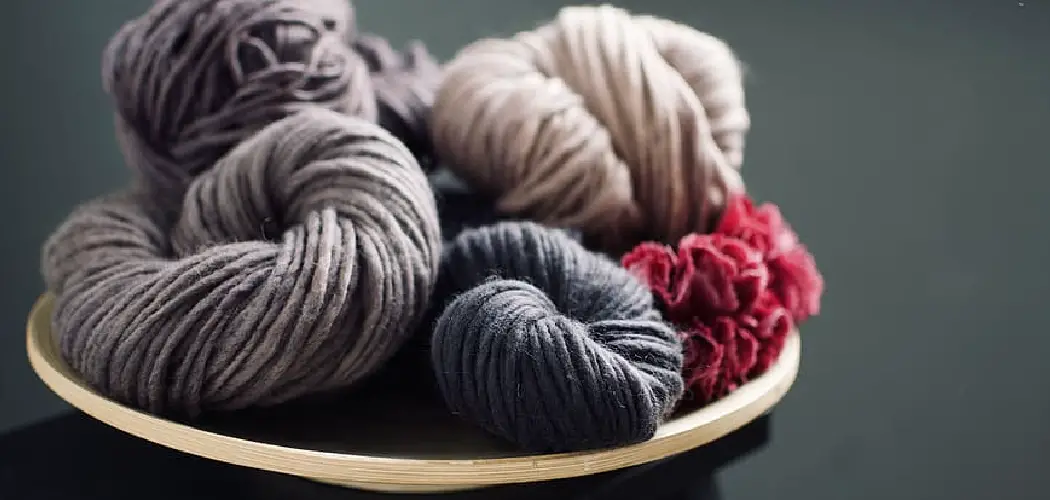Have you ever looked at a beautifully dyed skein of yarn and thought, “I wish I could do that”? Well, my friend, you’re in luck because, in today’s blog post, we’re going to dive into the world of dyeing yarn with food coloring. Yes, you heard it right – food coloring! Not only is this a fun and creative way to add unique and vibrant colors to your yarn stash, but it’s also an affordable and accessible alternative to traditional yarn dyes.
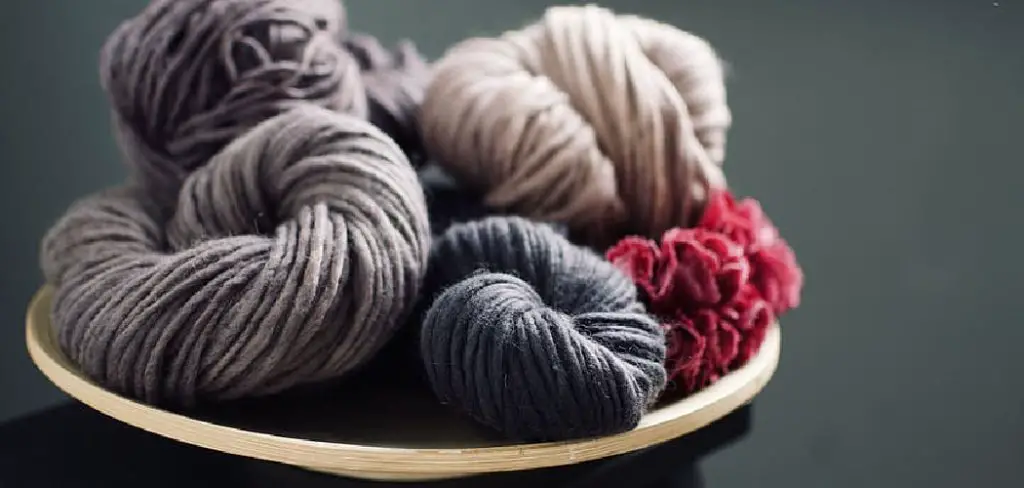
Whether you’re a seasoned yarn dyer looking to explore new techniques or a beginner wanting to dip your toes into the colorful world of yarn dyeing, this blog post will provide you with step-by-step instructions, essential tips, and inspiring ideas on how to dye yarn with food coloring. So gather your supplies, put on your creative hat, and get ready to unleash your inner Picasso as we embark on this colorful adventure together!
Supplies You Will Need to Dye Yarn With Food Coloring
- White or light-colored yarn
- Food coloring (gel or liquid)
- Vinegar
- Large pot
- Measuring spoons
- Stainless steel spoon or tongs
- Plastic wrap
- Microwave-safe bowl (if using the microwave method)
- Optional: rubber gloves, apron, and drop cloth
Step-by-step Guidelines on How to Dye Yarn With Food Coloring
Step 1: Prepare Your Yarn
Before you begin dyeing your yarn, you need to prepare it by winding it into a skein or hank. You can do this using a niddy noddy, swift, or even with the help of a friend. Make sure to tie loose pieces of yarn together to avoid tangling. Preparing your yarn in this way allows the dye to penetrate evenly and ensures consistent results.

Step 2: Soak Your Yarn
Next, you need to soak your yarn in a mixture of warm water and vinegar. The vinegar helps to open up the fibers of the yarn, allowing for better absorption of the dye. You can mix one cup of white vinegar with four cups of warm water in a large pot or bowl and let your yarn soak for at least an hour. Make sure that the yarn is completely saturated before proceeding to the next step.
Step 3: Prepare Your Dye
While your yarn is soaking, you can prepare your dye by mixing food coloring with warm water and vinegar. You can use either gel or liquid food coloring, but keep in mind that gel food coloring produces more vibrant colors. The amount of food coloring you will need depends on the intensity of color you desire and the weight of your yarn. As a general rule, you can mix one teaspoon of food coloring with two teaspoons of vinegar in half a cup of warm water.
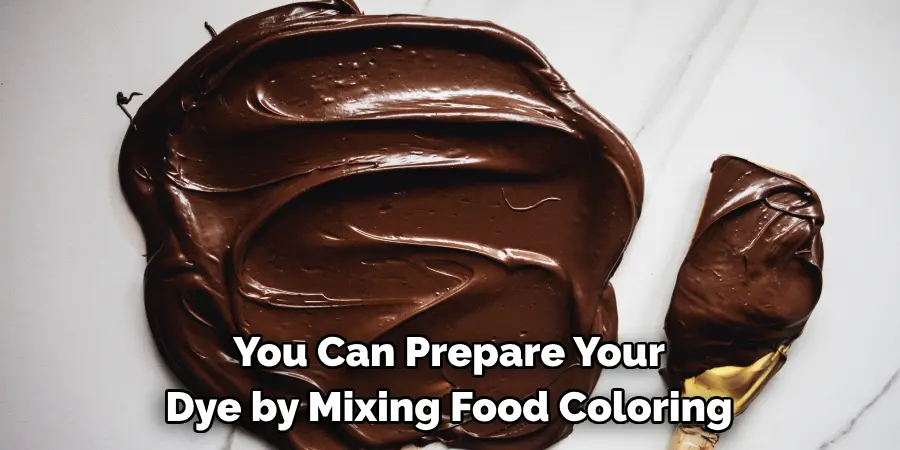
Step 4: Dye Your Yarn
Once your yarn is soaked and your dye is prepared, it’s time to start dyeing! You can either use the stovetop or microwave method for dyeing your yarn with food coloring. If you choose the stovetop method, place your yarn in a pot and add your dye mixture. Use a stainless steel spoon or tongs to move the yarn around gently and ensure that the dye is evenly distributed.
Heat the yarn and dye mixture on medium heat for about 20-30 minutes until all the dye has been absorbed. If you prefer the microwave method, place your yarn in a microwave-safe bowl and add your dye mixture. Cover the bowl with plastic wrap and heat it in the microwave for two minutes at a time until all the dye has been absorbed.
Step 5: Rinse and Dry Your Yarn
After the dye has been absorbed into your yarn, you need to rinse it thoroughly with cold water until the water runs clear. This step is crucial as it helps to remove any excess dye and prevents bleeding. Once your yarn is rinsed, gently squeeze out the excess water, and then hang it up to dry. Make sure to place some towels or a drop cloth underneath to catch any drips. If you want to avoid potential messes, you can also place your yarn in a salad spinner and spin out the excess water before hanging it up to dry.
Following these simple steps, you can easily dye yarn with food coloring and create your very own colorful and unique skeins. Experiment with different color combinations, techniques, and yarn bases for endless possibilities. So next time you’re looking to add some color to your knitting or crochet projects, consider using food coloring – you’ll be pleasantly surprised by the results! Happy dyeing!
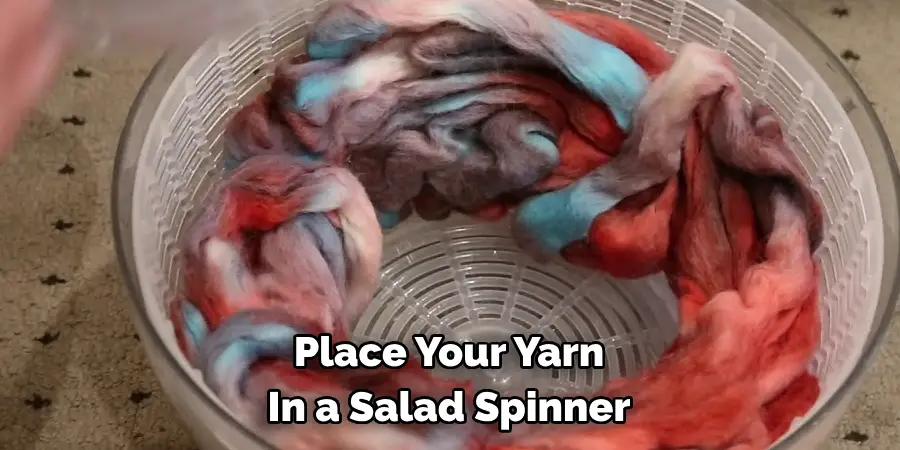
Additional Tips and Tricks to Dye Yarn With Food Coloring
1. If you want to achieve a more muted or pastel color, mix the food coloring with white vinegar before adding it to the yarn. Vinegar helps set the dye and creates a softer hue.
2. For a marbled or variegated effect, apply different colors of food coloring onto the yarn randomly, then use a brush or your hands to blend them. This will give your yarn a unique and dynamic look.
3. If you prefer a more solid color, use plastic wrap to tightly cover the yarn after applying the food coloring. Let it sit for a few hours before rinsing, then unwrap to reveal a beautiful solid color.
4. Experiment with different types of yarn such as wool, cotton, or silk to see how they take on the color differently. You may even want to try blending different types of yarn for a textured and multi-colored effect.
5. Don’t be afraid to mix colors! Food coloring allows for endless color combinations, so have fun and get creative with your dyeing process.
6. If you want a more vibrant or intense color, add more food coloring or let the yarn soak in the dye for a longer period. Keep in mind that the color may appear darker when wet, so consider this when dyeing.
7. Regular liquid food coloring works well for most projects, but you can also experiment with gel or powdered food coloring for more concentrated colors and different effects.
8. To prevent colors from bleeding and mixing, let each color dry completely before adding the next one. You can also use a blow dryer to speed up the drying process.
9. Keep in mind that colors may appear differently on different types of yarn and may change slightly after rinsing and drying. Be open to unexpected results and embrace the unique qualities of hand-dyed yarn.
10. Remember to protect your work surface and wear gloves to avoid staining your hands. Also, consider using a large plastic or stainless steel container for dyeing instead of using your kitchen utensils and pots.
Following these additional tips and tricks will help you create beautiful and unique hand-dyed yarn using food coloring. Have fun experimenting with different techniques and don’t be afraid to try new things. Happy dyeing!
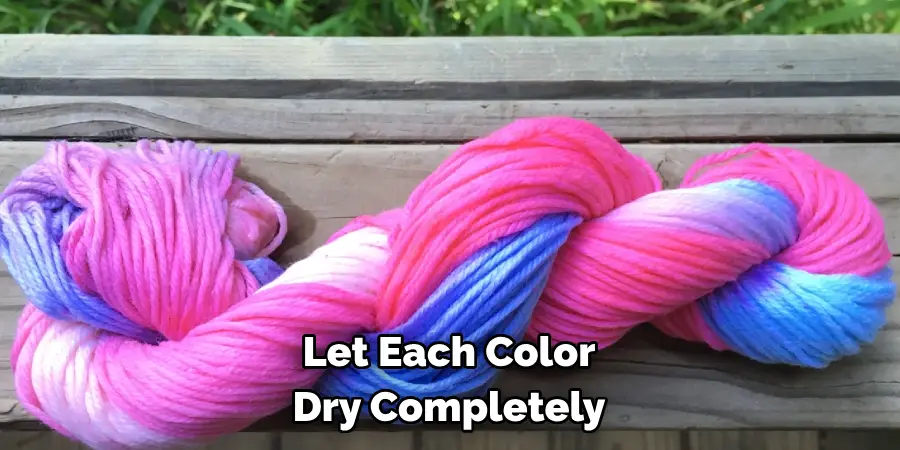
Frequently Asked Questions
Can I Use Any Type of Food Coloring to Dye Yarn?
Yes, you can use any type of food coloring to dye yarn. However, it is recommended to use gel or liquid food coloring as they are more concentrated and produce more vibrant colors. Powdered food coloring can also be used, but it may require more dye to achieve the desired color.
Is There a Specific Yarn Type That Needs to Be Used?
No, you can use any type of yarn to dye with food coloring. However, natural fibers such as wool, cotton, and silk tend to absorb the dyes better than synthetic fibers. This means that the color will be more vibrant and long-lasting on natural fibers.
Can I Use a Microwave to Dye Yarn?
Yes, you can use a microwave to dye yarn with food coloring. This method is called “microwave dyeing” and it involves mixing the yarn with water and food coloring in a microwave-safe container, and then heating it for short intervals until the desired color is achieved. This method is quicker than using a stovetop, but it may not work well with larger quantities of yarn.
How Do I Fix the Dye on the Yarn?
To fix the dye on your yarn, you will need to heat it after dyeing. You can do this either by steaming or by placing the yarn in hot water. Steaming is the preferred method as it produces more vibrant colors and does not require any additional steps. However, if you do not have a steamer, you can place the yarn in hot water (but not boiling) for about 30 minutes. After heating, rinse the yarn with cool water until the water runs clear.
Should I Wear Gloves When Dyeing Yarn?
It is recommended to wear gloves when dyeing yarn with food coloring. This will prevent staining your hands and also protect your skin from the dyes, which can be harsh on sensitive skin.
Conclusion
Now you know how to dye yarn with food coloring! It is a fun and easy way to add unique colors to your yarn projects. Remember to use caution when working with dyes and always follow safety precautions. Experiment with different color combinations and techniques to create one-of-a-kind yarns for all your knitting and crocheting projects. Have fun and happy dyeing!

